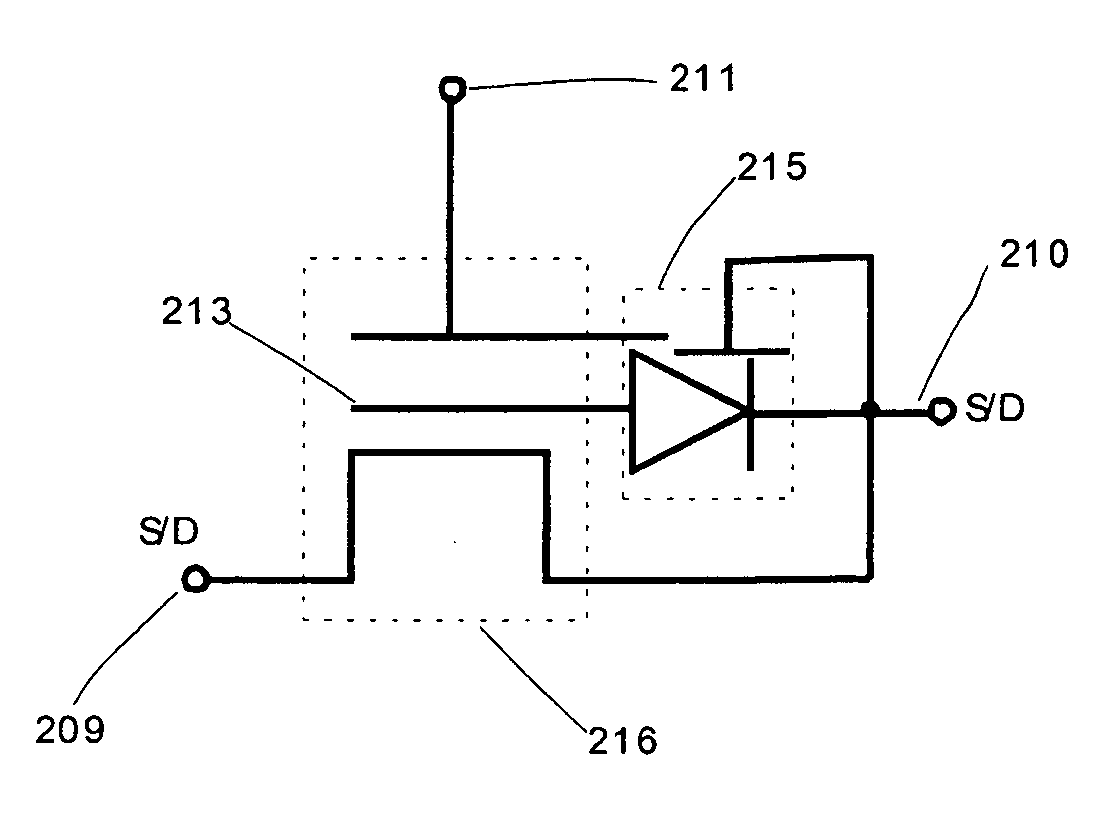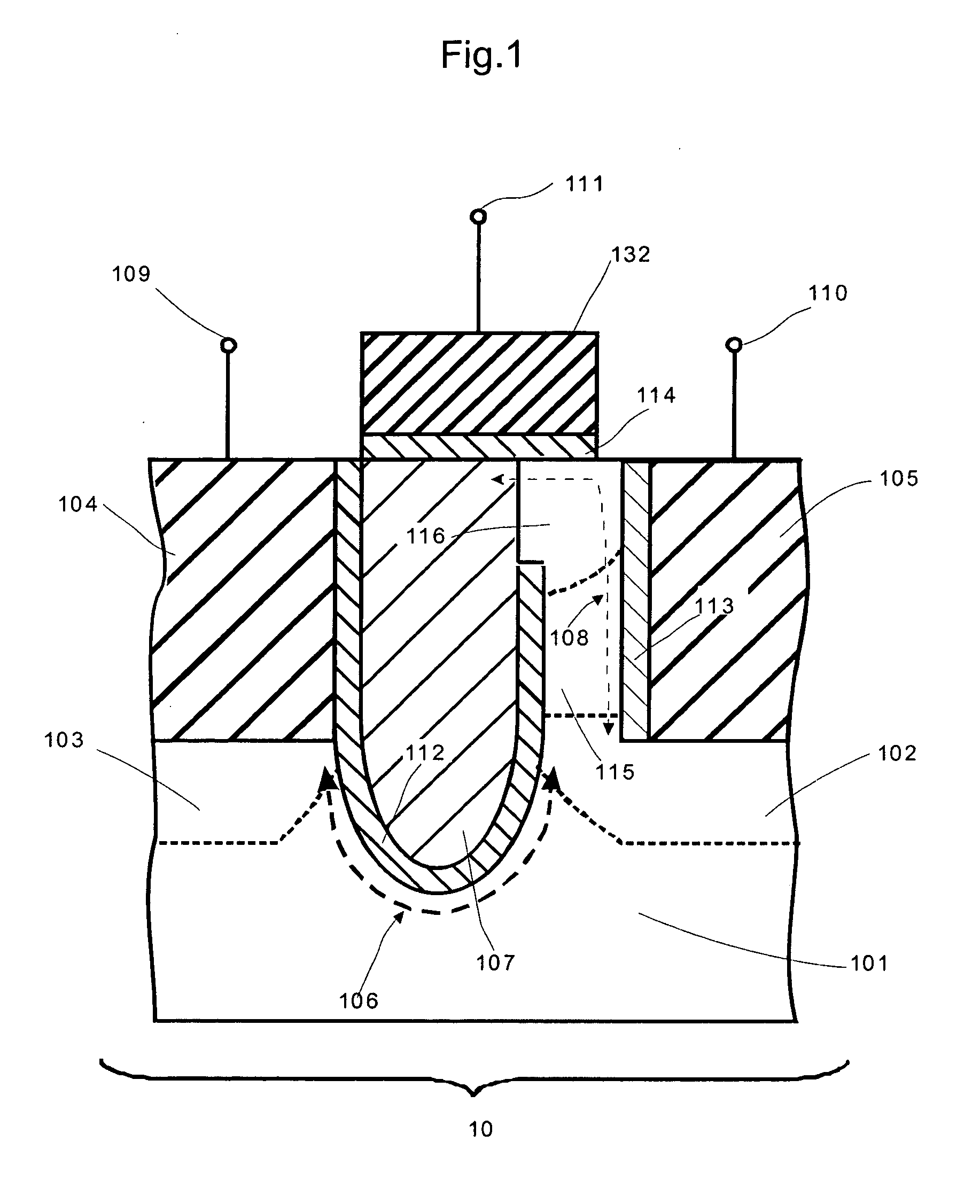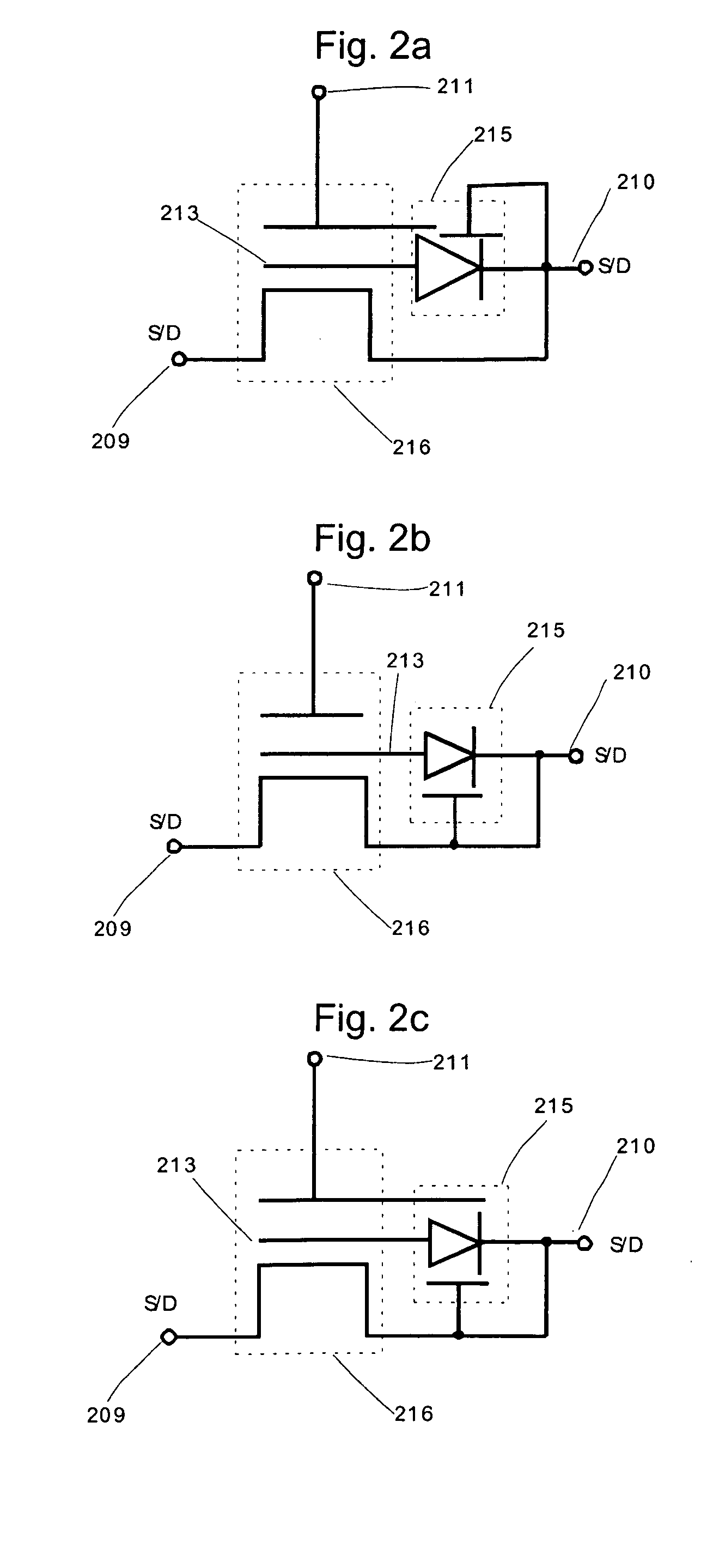Semiconductor memory device and method of forming the same
a memory device and semiconductor technology, applied in the direction of digital storage, solid-state devices, instruments, etc., can solve the problems of dram read operation destructive, difficult to scale the area of capacitors, and the process of building capacitors adds to dram manufacturing complexity
- Summary
- Abstract
- Description
- Claims
- Application Information
AI Technical Summary
Benefits of technology
Problems solved by technology
Method used
Image
Examples
Embodiment Construction
[0018]FIG. 1 illustrates an example cross-sectional view of the disclosed semiconductor memory cell 10 called floating junction gate (FJG) memory device. The FJG memory device 10 is usually formed in a semiconductor substrate or doped well 101 which has a light n-type or p-type doping concentration, e.g. doping level lower than 2×1018 cm−3. The substrate material can be single crystal silicon or silicon on insulator. Source 103, drain 102 are usually anti-doped to well or substrate 101. The channel region 106 is between the source 103 and the drain 102. It is recessed into substrate 101 in order to increase the length of the channel. Region 103 acts as source of a MOSFET and it can be connected to an external electrode 109 directly or via a source contact plug 104. Region 102 acts as drain of a MOSFET and can be connected to an external electrode 110 directly or via a drain contact plug 105. When the FJG device is turned on, current can flow between the drain 102 and the source 103 ...
PUM
 Login to View More
Login to View More Abstract
Description
Claims
Application Information
 Login to View More
Login to View More - R&D
- Intellectual Property
- Life Sciences
- Materials
- Tech Scout
- Unparalleled Data Quality
- Higher Quality Content
- 60% Fewer Hallucinations
Browse by: Latest US Patents, China's latest patents, Technical Efficacy Thesaurus, Application Domain, Technology Topic, Popular Technical Reports.
© 2025 PatSnap. All rights reserved.Legal|Privacy policy|Modern Slavery Act Transparency Statement|Sitemap|About US| Contact US: help@patsnap.com



